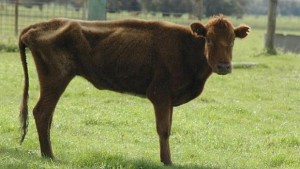If You Own Cattle, You Should Be Aware of Liability Issues
go.ncsu.edu/readext?419588
en Español / em Português
El inglés es el idioma de control de esta página. En la medida en que haya algún conflicto entre la traducción al inglés y la traducción, el inglés prevalece.
Al hacer clic en el enlace de traducción se activa un servicio de traducción gratuito para convertir la página al español. Al igual que con cualquier traducción por Internet, la conversión no es sensible al contexto y puede que no traduzca el texto en su significado original. NC State Extension no garantiza la exactitud del texto traducido. Por favor, tenga en cuenta que algunas aplicaciones y/o servicios pueden no funcionar como se espera cuando se traducen.
Português
Inglês é o idioma de controle desta página. Na medida que haja algum conflito entre o texto original em Inglês e a tradução, o Inglês prevalece.
Ao clicar no link de tradução, um serviço gratuito de tradução será ativado para converter a página para o Português. Como em qualquer tradução pela internet, a conversão não é sensivel ao contexto e pode não ocorrer a tradução para o significado orginal. O serviço de Extensão da Carolina do Norte (NC State Extension) não garante a exatidão do texto traduzido. Por favor, observe que algumas funções ou serviços podem não funcionar como esperado após a tradução.
English
English is the controlling language of this page. To the extent there is any conflict between the English text and the translation, English controls.
Clicking on the translation link activates a free translation service to convert the page to Spanish. As with any Internet translation, the conversion is not context-sensitive and may not translate the text to its original meaning. NC State Extension does not guarantee the accuracy of the translated text. Please note that some applications and/or services may not function as expected when translated.
Collapse ▲
Ownership of any animal means taking responsibility for it. Obviously, this includes basic husbandry practices such as food, water, and shelter. However, we often forget about other responsibilities related to that animal, such as how it may impact other people or their property, especially in the case of an accident.
Cattle spend a good portion of their time outdoors in fields. We rely on fences and other structures to keep them where they are supposed to be versus out causing mischief. Whether the escape is caused by a faulty fence or an unlatched gate, cattle who get the chance to roam other people’s property and public roads have the potential to cause serious damage. While negligence is often a factor used to determine liability in the case of an accident, a farmer may still be held responsible if damage occurs. This damage can be to a vehicle due to a collision or to any other type of property.
Cattle owners are most likely to be held responsible for damages if their negligence led up to the damage. This means ignoring needed repairs or failing to fortify a fence to contain an especially flighty animal. A farmer who knowingly fails to repair infrastructure or to improve it to contain their animals may even be charged with a misdemeanor. Additionally, animals who have strayed and have caused damage may be impounded by the property owner. The owner may hold them until they have been paid for damages plus the cost of upkeep for the animal. If the animal’s owner cannot be found or refuses to pay, there is a procedure for providing public notice and also for conducting a public sale of the animal.
Another source of liability for cattle owners is the condition of their animals. If an animal is unreasonably thin or being improperly cared for, they may be seized by a county or city authority. Animals that are not in good condition will draw attention if they are being kept in the public’s view. This can lead to a damaged reputation through gossip and even social media. Cattle owners need to be diligent about monitoring their animals’ body condition scores and feed availability. If there is a persisting issue with maintaining an acceptable Body Condition Score, the farmer should reach out to a veterinarian or extension agent to help determine what is causing the issue. Some cattle who may appear to be thin may also be perfectly healthy. A farmer who has cattle like this needs to be prepared to explain this to people who may be concerned but who are uneducated about cattle. Healthy cattle who may raise concerns may include those with dairy breed influences, heat-hardy breeds like Texas Longhorns, and even animals in certain production stages.
The best way to minimize your liability is to be proactive. Liability insurance is essential- make sure to talk to your insurance company about your policy to be sure that you have adequate coverage. Routinely inspect fences and other infrastructure and be aware of potential problem areas. If sharing a fence, be sure to have a written contract that outlines the role of both parties in maintaining the fence. Make sure that people passing through gates realize how important it is to properly secure them behind them and that visitors are aware of how to behave around cattle. In the case your cattle do get out, it is important for people to be able to contact you. Share your contact information with your neighbors and try to have a plan to implement in case cattle do get out. Additionally, take measures to make sure that your animals may be identified as belonging to you, such as ear tagging or branding.




